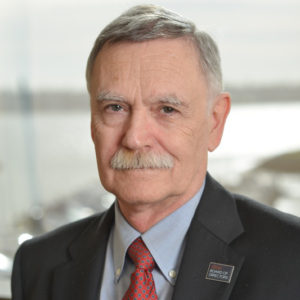 Shortly after our story about layoffs at CEDIA was posted, we spoke with CEDIA Board Chairman Dennis Erskine, who sought to correct what he said were some “misconceptions” presented in that article. Specifically, Erskine felt our call for more transparency from the organization was off the mark due to our misunderstanding about non-profit organizations.
Shortly after our story about layoffs at CEDIA was posted, we spoke with CEDIA Board Chairman Dennis Erskine, who sought to correct what he said were some “misconceptions” presented in that article. Specifically, Erskine felt our call for more transparency from the organization was off the mark due to our misunderstanding about non-profit organizations.
See what Erskine said we got wrong and why non-profits are special…
While there were many issues he had with our article, first and foremost among them was our call for transparency – a call that was based on our misconception about the fundamental structure of the organization. In a section of our story subtitled “Remember Who Owns the Organization,” we said:
CEDIA is a member-owned organization. Those hired to guide the group should have a strong inclination to be as transparent as possible with their owners. Most significant decisions should be offered to the membership for comment. Major decisions should seek ratification by the membership.
We went on to describe a few of the major decisions that seemed to have been sprung on the membership with little or no warning or explanation – the selling of the CEDIA show, the globalization initiative, the building of a new headquarters, the Bruno exit, the layoffs, etc. Surely, we mused, the members have the right to know about these plans in advance of their execution.
Inadequate Disclosure
“But communication on these major issues – some involving millions of dollars of member money – are not being adequately discussed or disclosed with the group’s owners,” our article stated.

CEDIA Board of Directors
Erskine began our conversation by saying that we need to understand that associations or non-profit organizations are different from traditional for-profit businesses. And this difference includes the fact that they have a different ownership structure.
“Associations or non-profit organizations, by law, do not have owners – there are no owners of a non-profit,” Erskine said. “A non-profit is required only to provide IRS form 990 to members – that’s under the charter that we have – or those additional items that the Bylaws of the non-profit provide. In our case, the only obligation we have is the 990s to be provided to the members of the organization.”
So our assertion that members own CEDIA is incorrect, Erskine maintained. This line of thinking extends out to suggest that the transparency we called for (for the member/owners) is misplaced.
So Who’s Right?
CEDIA’s Chairman is correct that non-profits do not have any “owners.” From the www.501c3.org website, we find this on the issue of non-profit ownership:
A nonprofit corporation has no owners whatsoever, only stakeholders. A stakeholder is not an owner, but rather someone who has a stake in the successful operation of the organization. Stakeholders could be members of the nonprofit, or even beneficiaries of the nonprofit’s activities. One thing stakeholders have in common: they have no legal ability to profit personally…hence, nonprofit. A nonprofit corporation is formed to carry out a public purpose, whether that be religious, educational, charitable, scientific or whatever.
 From the Culinane Law Group, a Texas-based law firm that specializes in non-profit organizations, we get this further clarification:
From the Culinane Law Group, a Texas-based law firm that specializes in non-profit organizations, we get this further clarification:
Once incorporated, the newly created nonprofit organization is a separate legal entity from its incorporators, directors, officers, and employees. The nonprofit corporation owns assets of the business and is entitled to receive the revenue from its operation.
CEDIA Members are NOT Owners
So CEDIA members do NOT own the organization. How did we get that wrong? Perhaps part of our confusion is that past administrations have had a strong focus on running the organization for the benefit of the members, such that they talked like, and acted as though, the members were the owners. This was particularly true in the early days of the association where the founding members were all well-known, – even friends – with each other.
We have had multiple CEDIA executives and directors tell us that the organization is “owned” by the members. Most likely they meant that more philosophically…rather than legally. We would assume they also understood the law.
So to whom is the non-profit accountable? Again, from Culinane Law Group we find this:
To whom is the the nonprofit accountable?
The organization is accountable to many constituencies.
- The General Public. Nonprofits are created to provide a charitable purpose to the public good, whether as charities, educational programs, churches or religious groups, or scientific or artistic organizations.
- State Agencies. Nonprofits must also comply with certain regulations in the states in which they operate. These may also require public disclosure of specific documents or the filing of certain reports.
- The IRS. Certain tax-exempt entities follow rules set by the IRS to keep their tax-exempt status.
The Need for More Transparency Still Exists
The consideration of all of these points does not change our opinion about the need for greater transparency. If this organization truly exists for the benefit of its members – then the members should be fully engaged in both the direction and the actions of the organization – whether legally required or not. One way to do this, is to find new ways to engage members in the process.
When we raised these issues with Erskine, he resorted to restating the minimum legally required responsibilities. We believe that CEDIA should be ready to go beyond these minimum legal requirements and take further actions to foster greater engagement.
To our knowledge, there is no law prohibiting CEDIA’s management from presenting their major goals and initiatives as embodied in an annual business plan to the members in a national webinar or other form of online conference at the beginning of each year. The organization could further encourage comment by members via their online Community bulletin board. Let’s tap our collective brainpower that exists at all levels within the organization and get great ideas from wherever they may reside.
Regular Updates
During the year, CEDIA’s mighty marketing machine – newly freed up with Emerald Expositions taking over the marketing of the show – could keep members apprised of progress towards achievement of these goals. Polls could be easily taken to assess member enthusiasm for the organization’s progress.
At the end of the year, the level of achievement against the years initiatives could be reviewed, along with an open call for ideas and input for the following year. The responsibility for these presentations could be split between the directors and the staff, so as to not add an undue burden on any one of them.
If the Bylaws don’t provide for any of this – and they don’t – then the Bylaws should be rewritten.
We believe this type of proactive effort to keep everyone on the same page would not only help to get more members engaged in the organization’s efforts, but would switch a greater number of them from disinterested and apathetic…to enthusiastic.
What do you think? Post your thoughts and ideas in the Comments section below this article. What advice do you have for CEDIA?
To learn more about CEDIA, visit: www.cedia.net





Leave a Reply